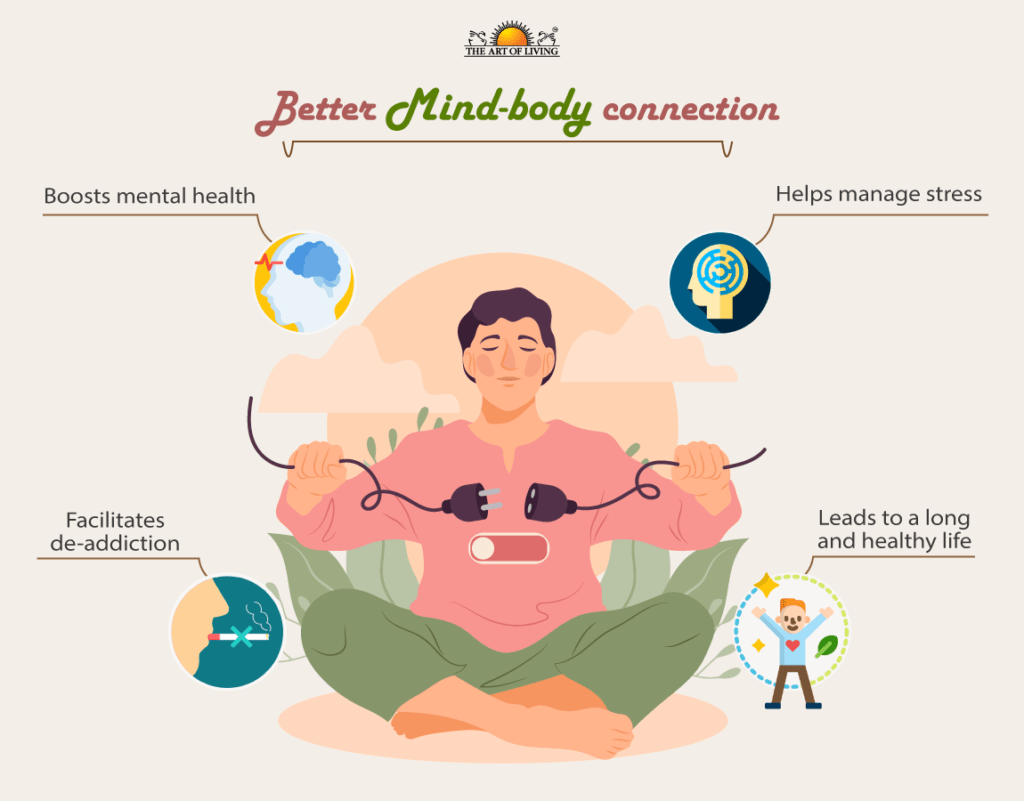The relationship between the mind and the body: How do our thoughts and emotions affect our physical health and vice versa?
The relationship between the mind and the body is a complex and dynamic one, with numerous interactions and feedback loops between our thoughts, emotions, and physical health.
The mind-body connection is a concept that recognizes the interdependence between our psychological and physical well-being, and the way in which our thoughts and emotions can affect our physical health, and vice versa.
In this essay, we will explore the relationship between the mind and the body, and how our thoughts and emotions can affect our physical health, and vice versa.

The Impact of Thoughts and Emotions on Physical Health
Our thoughts and emotions can have a significant impact on our physical health. Negative emotions such as stress, anxiety, and depression link numerous health problems, including cardiovascular disease, diabetes, and chronic pain.
Chronic stress, in particular, can lead to the release of hormones such as cortisol and adrenaline. Which can have damaging effects on the body over time. For instance, chronic stress links the development of hypertension, atherosclerosis, and other cardiovascular diseases.
In contrast, positive emotions such as happiness, gratitude, and contentment are associated with improved physical health outcomes. Studies have shown that positive emotions can lead to lower levels of stress hormones. Reduced inflammation, and improved immune system function.
People who experience positive emotions regularly are also more likely to engage in healthy behaviors such as regular exercise, healthy eating, and getting enough sleep.
The Impact of Physical Health on Thoughts and Emotions
Our physical health can also affect our thoughts and emotions. Chronic pain, illness, and disability can lead to negative emotions such as anxiety, depression, and frustration.
These negative emotions can, in turn, exacerbate physical symptoms, leading to a cycle of physical and emotional distress. For example, chronic pain can lead to feelings of hopelessness and helplessness. Which can increase the perception of pain and make it harder to manage.
Conversely, good physical health can lead to positive emotions such as happiness, contentment, and confidence. Regular exercise, healthy eating, and sufficient sleep can all contribute to improved mental health outcomes.
In particular, studies have shown that exercise reduces symptoms of depression and anxiety and improves overall mood.
Mind-Body Techniques Relationship
Mind-body techniques such as meditation, yoga, and mindfulness have been used for centuries to promote physical and emotional well-being. These techniques recognize the interdependence between the mind and the body to promote balance and harmony between the two.
Studies have shown that mind-body techniques can lead to improvements in a range of physical and emotional health outcomes, including stress, anxiety, depression, chronic pain, and cardiovascular disease.
For instance, studies have indicated that meditation reduces stress and anxiety while enhancing immune system function. Additionally, yoga has been found to alleviate symptoms of depression, anxiety, and chronic pain, as well as enhance the overall quality of life.
Research has demonstrated that mindfulness-based interventions reduce symptoms of stress, anxiety, and depression, while also enhancing overall well-being.
Conclusion
The relationship between the mind and the body is a complex and dynamic one. Our thoughts and emotions can have an impact on our physical health and can affect our thoughts and emotions.
By recognizing the interdependence between the two. We can promote balance and harmony in our lives, leading to improved overall well-being.
Mind-body techniques meditation, yoga, and mindfulness can be powerful tools for promoting and improving our physical and emotional health outcomes.
By incorporating these practices into our daily lives. We can optimize our mind-body connection and achieve greater overall health and well-being. 온라인카지노사이트
